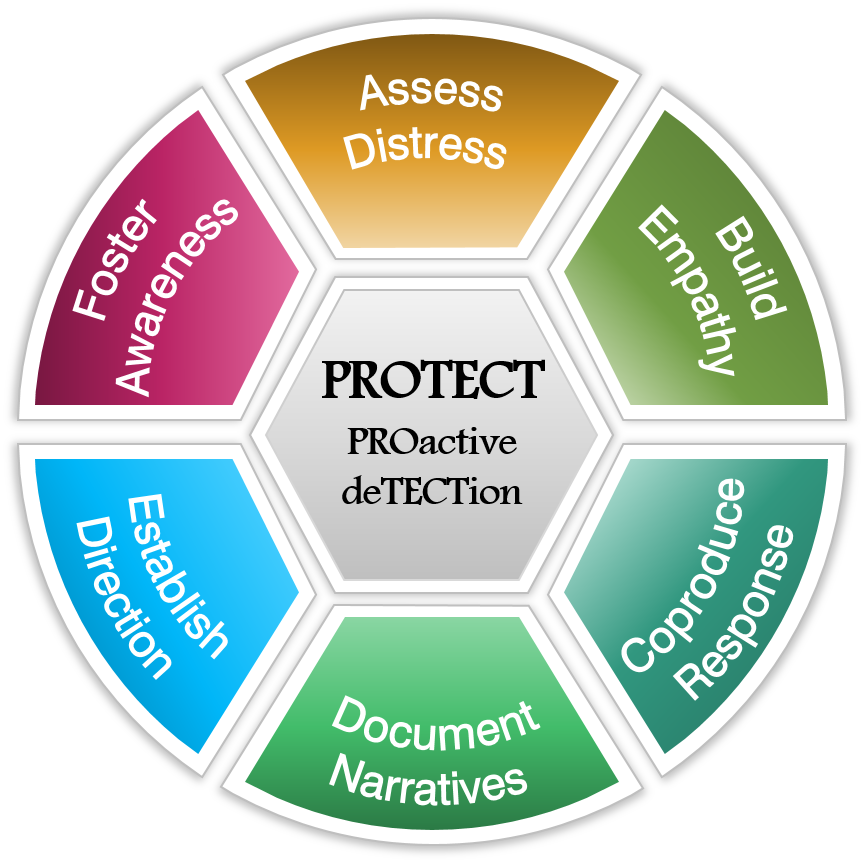Power outages can be disruptive, but with proper preparation, your aquarium fish can navigate these events with minimal stress. This guide provides a comprehensive overview of the challenges power outages pose to aquarium ecosystems and details effective strategies for ensuring the safety and well-being of your aquatic companions.
From understanding the impact of various outage durations to implementing backup power solutions and maintaining optimal water quality, this guide empowers you to proactively safeguard your fish during unforeseen power interruptions. It covers crucial aspects like emergency preparedness, equipment considerations, and post-outage recovery.
Understanding Power Outages in Relation to Aquariums
Power outages, unfortunately, are a common occurrence in many parts of the world. For aquarium owners, these disruptions can be particularly challenging, as they can quickly destabilize the delicate balance of the aquatic ecosystem. Understanding the impact of power outages on aquarium systems is crucial for preventing stress and potential harm to the fish and other inhabitants.Power outages affect aquarium ecosystems in several ways.
The sudden loss of power disrupts the normal functioning of essential components, such as heaters, filters, and air pumps, leading to a cascading effect on water parameters and the overall health of the aquatic life. The consequences of these disruptions can range from mild discomfort to severe stress, depending on the duration and severity of the outage.
Impact of Power Loss on Water Parameters
The immediate impact of a power outage on an aquarium is the cessation of water circulation and filtration. Without the continuous action of pumps, water quality deteriorates rapidly. Organic waste accumulates, leading to a rise in ammonia and nitrite levels, which can be toxic to fish. Additionally, the lack of filtration can cause a cloudiness in the water, further compromising the health of the aquatic life.
The absence of aeration also diminishes oxygen levels, potentially leading to fish suffocating.
Effect of Different Outage Types on Aquarium Ecosystems
Power outages can vary in duration, with some being brief interruptions and others lasting for extended periods. The impact on the aquarium ecosystem will differ significantly based on the length of the outage.
- Brief Power Outages: These short-term interruptions, lasting perhaps a few minutes, often cause minimal disruption. While water temperature may fluctuate slightly, the primary concern is the sudden cessation of water movement and aeration. The immediate effect may be a momentary stress on the fish, but with the restoration of power, the system usually recovers quickly. Examples include scheduled maintenance or momentary electrical surges.
- Extended Power Outages: Prolonged outages, lasting hours or even days, pose a significant threat to the aquarium ecosystem. The lack of circulation and filtration allows harmful toxins to accumulate rapidly. The temperature of the water can fluctuate dramatically, leading to hypothermia or overheating depending on the ambient conditions. Without aeration, the oxygen levels will drop considerably, creating an immediate risk of suffocation to the fish.
Extended outages may require careful intervention to maintain the water quality and the survival of the aquarium inhabitants.
Comparative Analysis of Outage Duration and Effects
The table below summarizes the effects of different outage durations on aquarium inhabitants.
| Outage Duration | Impact on Water Parameters | Impact on Fish |
|---|---|---|
| Brief (minutes) | Slight temperature fluctuation, minimal impact on filtration and aeration | Momentary stress, quick recovery with power restoration |
| Moderate (hours) | Accumulation of waste products, decline in oxygen levels, significant temperature fluctuation | Increased stress, potential for illness, reduced activity levels |
| Extended (days) | Rapid deterioration of water quality, severe drop in oxygen levels, significant temperature fluctuations | High risk of illness and death, severe stress, potentially irreversible damage |
Emergency Power Solutions for Aquariums

Maintaining a stable and healthy environment for aquarium fish necessitates a reliable power supply. Power outages can lead to detrimental temperature fluctuations, oxygen depletion, and other critical issues for the inhabitants. Understanding and implementing backup power solutions is crucial for ensuring the well-being of your aquatic pets during such events.Addressing potential power outages proactively safeguards your aquarium ecosystem.
By implementing suitable emergency power solutions, you can maintain optimal conditions for your fish, preventing stress and potential health complications. This involves exploring various options to maintain the aquarium’s essential functions, ranging from simple battery-powered backups to more sophisticated portable power stations.
Battery-Powered Backup Systems
Battery-powered backup systems provide a simple and often affordable solution for maintaining aquarium function during short power outages. These systems are designed to temporarily power essential equipment like aquarium heaters and filters. Choosing the appropriate system depends on the size of the aquarium and the duration of anticipated outages. A larger aquarium with more equipment may require a more robust backup system.
- Features: These systems typically consist of a battery bank, a power inverter, and a surge protector. The battery bank’s capacity determines the duration of power supply, while the inverter converts the DC power from the batteries to AC power suitable for aquarium equipment.
- Suitability: Ideal for short-term outages and smaller aquariums with minimal equipment. They are often more cost-effective than portable power stations but might not be suitable for extended outages or larger aquariums.
- Example: A small, 10-gallon aquarium with a heater and filter might benefit from a battery-powered backup system with a 100-watt inverter and a 12-volt battery bank, lasting up to 6 hours of continuous operation.
Portable Power Stations
Portable power stations offer a more versatile solution for maintaining aquarium function during power outages. These devices provide a greater capacity for power storage and can power a wider range of aquarium equipment, including lighting systems and larger filters. Their portability allows easy relocation if needed.
- Features: Portable power stations typically have multiple outlets, allowing for simultaneous operation of multiple aquarium devices. They often include a battery bank, an inverter, and various charging options, including solar panel integration. Capacity and output power are crucial factors when choosing a portable power station for an aquarium.
- Suitability: Ideal for larger aquariums and those requiring extended power backup. They offer more flexibility for various aquarium setups and longer outage durations, but they come at a higher cost compared to battery-powered systems.
- Example: A 50-gallon aquarium with multiple filters, a heater, and a sophisticated lighting system might benefit from a portable power station with a capacity of 500 watts or more, potentially lasting up to 12 hours of continuous operation.
Comparison of Emergency Power Solutions
The following table summarizes the key features, costs, and suitability of different emergency power solutions for aquariums.
| Feature | Battery-Powered Backup Systems | Portable Power Stations |
|---|---|---|
| Cost | Lower | Higher |
| Efficiency | Generally lower for larger loads | Higher, can handle larger loads |
| Size | Compact | Variable, depending on model |
| Duration of Power Backup | Limited, usually hours | Potentially days |
| Suitability | Small aquariums, short outages | Large aquariums, extended outages |
Aquarium Equipment Considerations During Outages

Ensuring the well-being of your aquatic companions during a power outage requires careful consideration of the essential equipment in your aquarium setup. Understanding which components are critical and how to maintain their functionality during a power failure is vital for the health and survival of your fish. This section will delve into the specific equipment needs and strategies for maintaining optimal conditions during these periods.
Essential Equipment Requiring Backup Power
Maintaining a stable environment for aquarium inhabitants during power outages necessitates backup power for certain critical components. These components ensure the continuous delivery of essential services, such as water quality management and temperature control. Failure to provide backup power for these items can lead to detrimental effects on the fish.
- Powerheads/Filters: These devices are crucial for maintaining water circulation and filtration. Proper water movement prevents stagnant water, which promotes the growth of harmful bacteria. Without adequate filtration, harmful toxins can accumulate, threatening the health of your fish.
- Heaters: Maintaining the correct water temperature is paramount to the well-being of aquarium fish. Sudden temperature fluctuations can induce stress and potentially lead to disease or death. Providing backup heating ensures the aquarium environment remains stable.
- Aeration Pumps: Aeration is critical for maintaining dissolved oxygen levels in the water. Reduced oxygen levels can lead to fish gasping for air and, ultimately, death. Backup aeration pumps ensure continuous oxygen supply, even during power outages.
Maintaining Water Quality During Outages
Water quality is paramount to the health of your fish. Maintaining sufficient parameters, such as ammonia, nitrite, and nitrate levels, is crucial. During a power outage, the absence of filtration and aeration systems can lead to the rapid deterioration of water quality. Addressing this issue requires a proactive approach to ensure continuous water quality.
Adequate Aeration and Filtration During Power Failures
Proper aeration and filtration are fundamental to maintaining a healthy aquarium environment. These processes remove waste products, maintain oxygen levels, and prevent the buildup of harmful substances. During power outages, maintaining these processes is crucial to prevent the onset of diseases or even the demise of your fish.
Accurate Temperature Control and Its Impact on Fish Health
Temperature plays a significant role in the health and well-being of aquarium fish. Maintaining the correct temperature prevents stress and promotes healthy growth. Sudden fluctuations or drastic changes can lead to illnesses, and even death. Ensuring temperature stability during power outages is crucial for the fish’s survival.
Backup Power Needs for Aquarium Components
The following table Artikels the backup power needs for different aquarium components. This table provides a practical guide for planning and selecting appropriate backup power solutions.
| Aquarium Component | Backup Power Needs |
|---|---|
| Heaters | Small, dedicated battery backup or portable power stations |
| Aeration Pumps | Small, dedicated battery backup or portable power stations, or battery-operated air pumps |
| Filters | Larger, dedicated battery backup or portable power stations |
| Powerheads | Smaller, dedicated battery backup or portable power stations, or battery-operated powerheads |
Preparing Your Aquarium for Power Outages
Proactive preparation is crucial for ensuring the well-being of your aquarium inhabitants during unexpected power outages. Proper planning and the acquisition of essential emergency supplies can mitigate potential stress and maintain a healthy environment for your fish and other aquatic life. This section details the steps to take before a potential power outage, including the development of a preparedness plan and the acquisition of necessary emergency supplies.A well-prepared aquarium can withstand power outages more effectively.
Understanding the potential impacts of a power outage on your aquarium’s ecosystem is essential for implementing a robust emergency plan. This includes considering the specific needs of your fish, the duration of anticipated outages, and the availability of backup power sources.
Establishing an Emergency Preparedness Plan
A comprehensive emergency plan Artikels the steps to be taken during a power outage. This plan should include contact information for emergency services, as well as a detailed schedule for performing critical maintenance tasks. The plan should address all potential issues, from maintaining water quality to providing adequate aeration and heat.
Stockpiling Emergency Supplies
Adequate supplies are essential for maintaining the aquarium’s ecosystem during a power outage. These supplies will sustain your aquarium’s inhabitants while awaiting the restoration of power.
Essential Emergency Supplies
- Power Backup System: A reliable power backup system, such as a portable generator or battery backup, is crucial for maintaining essential aquarium functions during an outage. Consider the size and power needs of your aquarium when selecting a backup system. For example, a small, low-powered aquarium might only require a small inverter, while a large system might require a generator.
Ensure the power backup system can handle the load of the aquarium equipment.
- Water Testing Kits: Regular water testing kits are essential for monitoring water parameters like ammonia, nitrite, nitrate, and pH. These kits will allow you to quickly identify any potential issues arising from the power outage, and will aid in quick action to correct problems before they become critical. Maintaining proper water quality during an outage is paramount for the health of your fish.
- Emergency Water Supply: A sufficient reserve of dechlorinated water is necessary to maintain the aquarium’s water levels. Calculate the amount of water your aquarium uses and keep an appropriate quantity of dechlorinated water stored, considering the potential duration of the outage.
- Backup Heater/Cooler: For aquariums with temperature-sensitive species, a backup heating or cooling system is necessary to maintain optimal water temperatures. Consider the capacity of the system to meet the needs of your aquarium. These systems are especially important for aquariums with tropical fish or sensitive invertebrates.
- Emergency Aeration System: An alternative aeration system, such as an air pump and tubing, is crucial for ensuring oxygen supply to the fish. The system should have sufficient capacity to meet the needs of your aquarium during an outage. Ensure sufficient air supply for all fish in the aquarium.
Creating a Preparation Checklist
A detailed checklist is crucial for ensuring all necessary steps are taken before a power outage.
| Step | Action |
|---|---|
| 1 | Inventory of Equipment |
| 2 | Identify backup power sources. |
| 3 | Gather necessary emergency supplies (water, testing kits, backup heater/cooler, aeration system). |
| 4 | Develop a detailed emergency plan. |
| 5 | Establish a communication plan with other aquarium owners. |
Maintaining Water Quality During Power Outages
Maintaining optimal water quality in your aquarium is crucial for the health and well-being of your fish, even during a power outage. A consistent water environment, free from fluctuations in parameters, promotes the health of your aquatic ecosystem. Neglecting water quality during a power outage can lead to rapid deterioration of water conditions, potentially stressing or harming your fish.
This section Artikels the importance of monitoring and maintaining water quality during power outages.Maintaining stable water parameters is essential for the survival of your aquarium inhabitants during power outages. Deviations in pH, ammonia, nitrite, and nitrate levels can cause significant stress and illness. This is because the balance of the aquarium’s biological filtration system is disturbed, potentially leading to the accumulation of harmful substances.
Furthermore, changes in temperature can also be detrimental to the health of the fish.
Monitoring Water Quality During a Power Failure
Regular monitoring of water parameters during a power outage is vital to assess the condition of your aquarium and take necessary corrective actions. This allows for proactive management of the situation, minimizing the risk of harm to your fish. Methods for monitoring water quality include visual observation, regular water testing, and employing low-power water testing kits. These tools help in determining the levels of key parameters such as ammonia, nitrite, nitrate, pH, and temperature.
Role of Water Changes in Maintaining Water Quality During Outages
Water changes play a critical role in maintaining water quality during power outages. They help to dilute harmful substances that accumulate due to the lack of filtration and aeration. This process removes excess waste products and helps maintain a healthy environment for your fish. A regular schedule of water changes can be a critical component of emergency maintenance.
Need for Regular Water Testing During Power Outages
Regular water testing is essential during power outages to track changes in water parameters. By regularly testing the water, you can detect problems early and take corrective actions before they affect the fish’s health. This proactive approach allows for timely intervention, minimizing the risk of stress or harm to your aquatic pets.
Emergency Water Changes Procedure
The following steps Artikel a procedure for performing emergency water changes during a power outage:
- Assess the current water parameters. Carefully evaluate the existing water quality to understand the extent of any deterioration.
- Gather necessary materials, including a clean bucket, water conditioner, and a water testing kit.
- Carefully remove a portion of the old water, ensuring not to disturb the substrate or fish.
- Replace the removed water with dechlorinated water. Use a water conditioner to neutralize chlorine and chloramine, ensuring the water is safe for your fish.
- Monitor water parameters regularly. This ensures that the water changes are effectively maintaining a safe environment for your fish.
- Maintain a consistent schedule of partial water changes as often as necessary to maintain a stable water environment.
Water Quality Parameters to Monitor During an Outage
Monitoring these parameters during a power outage can help you proactively address potential issues.
| Parameter | Ideal Range (ppm/mg/L) | Explanation |
|---|---|---|
| Ammonia | 0 | Ammonia is toxic to fish. High levels indicate a problem. |
| Nitrite | 0 | Nitrite is also toxic. High levels indicate a potential problem. |
| Nitrate | <40 | High nitrate levels can lead to problems. |
| pH | 6.5-7.5 | Significant fluctuations can be harmful to fish. |
| Temperature | Appropriate for fish species | Maintaining the correct temperature is critical. |
Fish Species Resilience to Power Outages

Aquarium fish, like all living creatures, react differently to environmental changes. Understanding how various species tolerate power outages is crucial for proactive care and minimizing stress during these events. Proper preparation and knowledge of fish resilience can significantly impact their well-being.Different fish species exhibit varying degrees of tolerance to power outages, influenced by their natural habitats and evolutionary adaptations.
Factors such as the duration of the outage, the stability of the water parameters, and the overall environment of the aquarium can significantly impact the fish’s response.
Fish Species Susceptible to Stress
Certain fish species are inherently more sensitive to fluctuations in their environment, including power outages. These fish, often originating from regions with more stable or predictable power conditions, might find the sudden change in light, temperature, and flow more stressful. Examples include those with delicate fins, slower metabolisms, or specific environmental requirements, such as certain species of cichlids, discus fish, and some types of livebearers.
Their sensitivity necessitates extra vigilance during power outages.
Fish Species Known for Resilience
Conversely, some fish species are better adapted to fluctuating conditions, and are more likely to endure a power outage with minimal stress. These fish, often originating from environments with more unpredictable power conditions, have developed adaptive mechanisms. Examples include certain species of hardy community fish like barbs, danios, and some catfish species. These resilient fish are better equipped to handle the temporary changes associated with a power outage.
Comparing and Contrasting Tolerance Levels
The tolerance of fish to power outages is a spectrum, not a simple dichotomy. Some fish species, while not considered extremely resilient, can adapt to a power outage of moderate duration if the water parameters are stable. Others might require more intensive measures, including temperature regulation or oxygen supplementation. Comparing and contrasting these tolerance levels can guide owners to provide the appropriate support during an outage.
Categorizing Fish Species by Resilience
A generalized categorization of fish species by their resilience to power outages is presented below. This table serves as a general guide; individual fish can react differently based on their specific conditions. It is crucial to monitor your fish closely and adjust care accordingly.
| Fish Species Category | Description | Examples |
|---|---|---|
| Highly Resilient | Species well-suited to fluctuating environmental conditions, demonstrating a strong capacity for adaptation. | Barb species, Danio species, some catfish species, certain species of tetras |
| Moderately Resilient | Species showing moderate tolerance to environmental fluctuations, but potentially requiring some support during power outages. | Some cichlid species, certain livebearers, some types of gouramis |
| Susceptible | Species that might experience significant stress from power outages, requiring immediate and careful attention to ensure their well-being. | Discus fish, certain types of livebearers, some angelfish |
Immediate Actions Upon a Power Outage
A power outage can be a stressful event, but swift and appropriate action can minimize harm to your aquarium inhabitants. Understanding the immediate steps to take will help ensure the safety and well-being of your fish and maintain the health of your aquatic ecosystem. This section provides a clear procedure for assessing the situation and taking necessary precautions.
Assessing the Impact of the Outage
The first priority upon a power outage is to quickly evaluate the impact on your aquarium system. This includes determining the duration of the outage and identifying any immediate changes in the environment. Observe the water parameters, including temperature fluctuations and any signs of unusual behavior in the fish. The speed of the temperature drop will depend on the size of the aquarium, insulation, and ambient temperature.
Rapid changes can stress fish, so understanding the rate of change is crucial. Also, check for any damage to the aquarium equipment, such as cracks in the glass or malfunctioning filters.
Emergency Actions During a Power Failure
Safety and efficiency are key during a power outage. The immediate actions taken will largely depend on the duration of the outage. A short outage might require minimal intervention, while a prolonged outage demands more proactive measures. A rapid assessment is essential to identify any critical issues.
Step-by-Step Guide for the First Few Hours
Following a power outage, a systematic approach is vital. This step-by-step guide Artikels the actions to take in the initial hours to ensure the well-being of your aquarium inhabitants.
- Immediate Assessment (0-30 minutes): Immediately turn off any electrical equipment connected to the aquarium, such as heaters and pumps. Check the aquarium water temperature and observe the fish for any unusual behavior. Note the time of the outage.
- Maintaining Water Temperature (30-60 minutes): If possible, use a battery-operated or solar-powered thermometer to monitor water temperature closely. A sudden drop in temperature can be harmful to fish. If the temperature drops significantly, consider using a backup heating source like a battery-powered aquarium heater (if available). Assess if a backup power source is needed, especially if the outage is prolonged.
- Water Quality Monitoring (1-2 hours): Monitor the water parameters (ammonia, nitrite, nitrate) if you have the necessary equipment. If the outage is prolonged, frequent monitoring is critical. If there are noticeable changes in water quality, consider using an emergency water conditioner to help neutralize the changes.
- Maintaining Oxygen Levels (Ongoing): If there is no external filtration system, consider introducing an air pump to maintain oxygen levels. This is especially crucial for sensitive species. A small air pump with a battery backup is very helpful.
- Backup Power Solutions (If applicable): If a backup power solution is in place, connect the equipment and carefully monitor the operation. Ensure that the backup power source is stable and supplying the necessary power to the equipment.
Immediate Actions Checklist
- Turn off all electrical equipment connected to the aquarium.
- Check the aquarium water temperature and observe fish behavior.
- Monitor water quality parameters (ammonia, nitrite, nitrate) if possible.
- Introduce an air pump if necessary to maintain oxygen levels.
- Use a battery-operated or solar-powered thermometer to monitor water temperature.
- If a backup power solution is available, connect and monitor its operation.
- Document the time of the outage and any observed changes.
Long-Term Impacts and Recovery

Extended power outages can have significant and lasting effects on your aquarium ecosystem. The duration of the outage directly correlates with the severity of the potential damage, impacting water quality, fish health, and the overall stability of the environment. Proper preparation and swift action after a prolonged outage are crucial for successful recovery.
Long-Term Effects on Aquarium Inhabitants
Prolonged power outages disrupt the delicate balance within the aquarium. Deprived of filtration, heating, and aeration, the water quality deteriorates rapidly. This can lead to ammonia and nitrite spikes, causing stress and illness in fish. In severe cases, fish may die due to oxygen depletion or exposure to toxic substances. Other organisms, like invertebrates and beneficial bacteria, are also affected, leading to a cascading effect on the entire ecosystem.
The duration of the outage significantly impacts the extent of the damage, with prolonged periods leading to more severe consequences.
Restoring Aquarium Function
The process of restoring the aquarium to its normal function after an outage requires a methodical approach. First, carefully assess the condition of the water. If significant changes are observed, consider partial water changes to dilute harmful substances. Subsequently, re-establish the filtration system and ensure proper aeration to support the oxygenation of the water. Gradually reintroduce the heat source to maintain the correct temperature, which is vital for the health of the fish.
Monitoring the water parameters (pH, ammonia, nitrite, nitrate) regularly during this phase is essential. The slow reintroduction of the aquarium’s typical lighting cycle helps the inhabitants adjust to the changes.
Monitoring Fish Health and Water Parameters
Regularly monitoring fish health and water parameters after the outage is crucial for identifying any emerging issues. Pay close attention to signs of stress or illness in fish. Changes in appetite, erratic swimming patterns, lethargy, and visible wounds are all potential indicators. Also, continuously monitor ammonia, nitrite, and nitrate levels, using appropriate test kits. Maintaining a stable water temperature is critical.
Frequent water changes, adjusted to the current parameters, can help mitigate any harmful substances accumulated during the outage. Use a water testing kit to measure the levels of ammonia, nitrite, and nitrate. If these levels are elevated, perform partial water changes.
Identifying Signs of Stress or Illness
Recognizing signs of stress or illness in fish is critical for prompt intervention. Lethargy, loss of appetite, unusual swimming patterns, and the presence of wounds or discoloration are all indicators that require immediate attention. If you notice any of these signs, isolate the affected fish to prevent the spread of infection. Monitor their condition closely and consult a veterinarian specializing in aquatic animals for advice if the situation warrants.
Changes in behavior, such as hiding or aggression, should also be noted and addressed.
Gradual Restoration of the Aquarium Ecosystem
A gradual approach to restoring the aquarium ecosystem after a long outage is vital for its stability. Start by slowly reintroducing the aquarium’s normal lighting cycle. Avoid sudden shifts in light intensity. This adjustment helps the fish acclimate to the new conditions. Gradually restore the feeding schedule and observe the fish’s response.
Pay close attention to the fish’s overall health and water parameters, adjusting your actions as necessary. Re-establish the beneficial bacteria colony through biological filtration, taking into account the length of the outage and the impact on the established cycle.
Ending Remarks

Protecting your aquarium fish during a power outage requires a proactive approach, encompassing preparation, immediate action, and long-term recovery strategies. By understanding the effects of power loss, implementing suitable backup systems, and maintaining optimal water conditions, you can ensure the health and well-being of your fish through any power interruption. This guide offers a complete framework for safeguarding your aquarium inhabitants during such events.